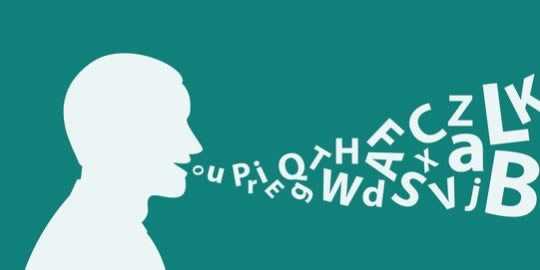 One of my specialties is character work—whether it’s an accent or a voice or just a different personality, I came out of the womb trying to make Mel Blanc proud. And one of the questions I get a lot from students is, “How do you do that?”
One of my specialties is character work—whether it’s an accent or a voice or just a different personality, I came out of the womb trying to make Mel Blanc proud. And one of the questions I get a lot from students is, “How do you do that?”
My answer is always, “Listen!”
Building your character voice arsenal—for video game, animation, and even commercial work—is all about the art of Watch, Listen, Repeat. Here are five things I pay attention to when building a new character voice:
- What’s the accent? Whether we realize it or not, we all speak with an accent of some kind, and accents are as complicated and multifaceted as different animal species. To truly master an accent and sound like a native, you’ll need to do some intense listening-and-repeating. If you’re trying to nail down the RP sound (short for Received Pronunciation, the fancy term for a “proper” English accent), watch BBC news broadcasts. Repeat everything the anchor says. Watch interviews with native English folks. How do they pronounce vowels? Consonants? What don’t they pronounce? (The “r” in “car” and “party,” for example.) Ever notice that words like “Tuesday” actually sound like “Chewsday” (depending, of course, on the English dialect)? And speaking of which, dialects are a whole other ballgame. It’s all about the details. Professional dialect coaches can help you, if you’re interested, but the most important thing is to listen, repeat. Listen, repeat. You will feel crazy. You will sound crazy. But the more you do it, the better you’ll get. Fall in love with slipping into another sound!
- Any vocal ticks? Some people stutter. Some people click their tongues, or speak with a lisp, or blow out air before they say “w” (hello, Family Guy “Cool Hwhip” scene). Some people talk faster when they’re nervous. Pay attention to those vocal ticks—the more nuanced you can get with it, the better. Knowing your character will help you build their voice. Are they a take-the-bull-by-the-horns, fast-moving city dweller? If so, maybe they talk a million miles a minute; they’re rushed, they’ve got to be places. No time for fluff. Are they a little too fond of “wine o’clock?” Maybe they giggle a bit too often and slur their words. Gum-chewer? Add those smacks in. Do they wear dentures? Maybe their speech sounds “slippery,” like the dentures are slidin’ around in there. Get into the nitty gritty—all those little ticks are what make us HUMAN and unique. And they’re what will make your character unique, as well.
- What’s the physicality look like? Voice acting is deceptively physical—you only hear us, and so you can’t see the immense physical effort that goes into a truly convincing and memorable character performance. Use your body to bring that character to life, not just your voice! If you’re voicing an upper-crust heiress, maybe she always has her nose in the air, her back ramrod straight, a slight sneer always curling her mouth upward. Perhaps she always talks slightly through her teeth, like she’s hissing in disdain at those beneath her station. Maybe you’re voicing a hulking orc—he’s got big tusks, even bigger biceps, and a volume problem. He has to talk around those tusks and he’s a seasoned battlefield warrior, so an “indoor voice” is as foreign to him as the concept of delicacy. Get loud with him—let’s hear those tusks in your recording. Maybe you’re voicing a tiny, excitable dog. Are you going to sound slightly out of breath from sheer glee? Pitch your voice up to convey that sense of “itty bitty?” Bounce from topic to topic in true, overly-hyped dog fashion? Take a page from Olivia Newton John and get physical! (Not…not like that. Not like…ahem.)
- Who do you know in real life that you can use as inspiration? A teacher, a parent, a friend, the guy at the checkout counter—everyone has distinctive ways of speaking that are gold mines to voice actors. Maybe your mom is from the Midwest. She pronounces “Mom” like “Mahm,” “tomatoes” turns into “tomaytuuuhs,” and “Oh my gosh” sounds like, “Ohh mai gaaaaash!” with that fabulous, wide, drawn-out “a” sound at the end. Maybe your old English teacher is from the South and said,“Bless your heart,” when she really meant, “you absolute idiot.” Work that into your character! Maybe your neighbor’s got sinus issues and always sounds like he has a cold. Is there a character you’re voicing that could borrow that stuffy sound? Just like they tell artists to draw from life, voice actors, too, should draw from life—draw from the characters in real life to fuel the fictional characters you’re voicing!
- What do you need to do to prep? Not every role demands Daniel Day Lewis-esque levels of method dedication. But it’s still important to know what you need to help you to bring your character to life. If it’s a high-energy character, do some jumping jacks or push-ups to warm yourself up. If it’s an energetic little kid, hang out with your niece or your little cousin for inspiration! Also, props are great (as long as you can’t hear them on your recording). Bring that hat or that feather boa or that beer tankard into the booth and use it in your performance! The audience won’t be able to see it, but it’s another tool you can add to give your character some tangible weight. It’s like dressing up Halloween—as soon as you put that cape on, you are Dracula (or you’re just “bothering your great aunt and it’s Thanksgiving, Casey, how many times have we been over this?”).
 Character work is like trying on shoes—you have to shop around a bit to see what fits. That’s why it’s so important to let yourself play and to try things! Experiment! Listen, repeat, listen, repeat. The more you do, the more comfortable and, more importantly, the more fun you’ll have in that booth!
Character work is like trying on shoes—you have to shop around a bit to see what fits. That’s why it’s so important to let yourself play and to try things! Experiment! Listen, repeat, listen, repeat. The more you do, the more comfortable and, more importantly, the more fun you’ll have in that booth!
Capes, of course, are optional but highly encouraged.
Great tips, Casey!
I look forward to getting back in the studio to try things out on the mic.
Duuuuuuude. Love your posts. chocked full of great, inspirational info. Thanks Casey, you are queen of energy and dialects.
Thanks for the tips. Going to practice them now!